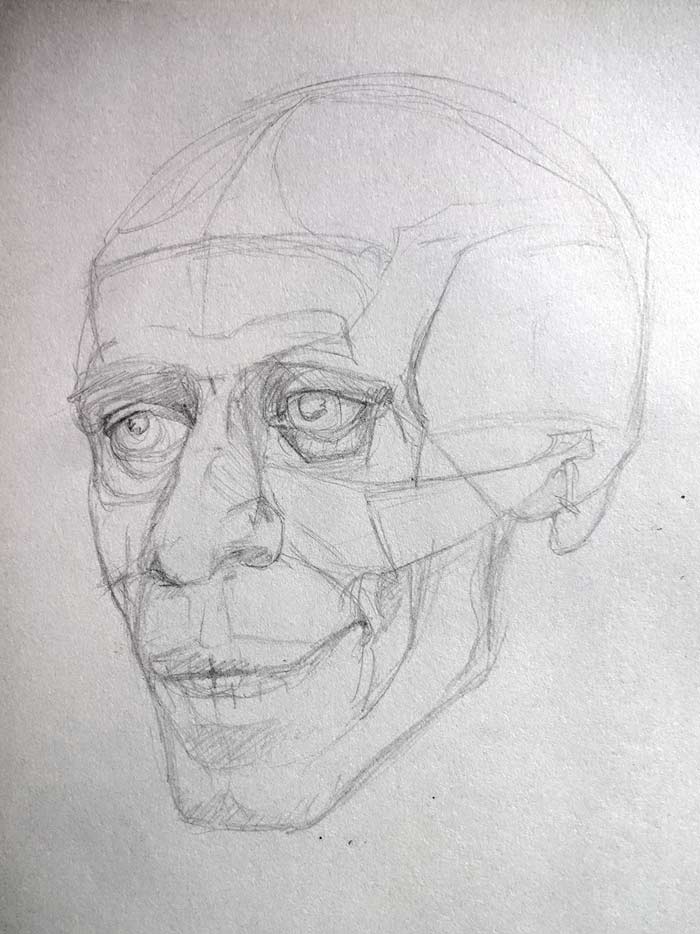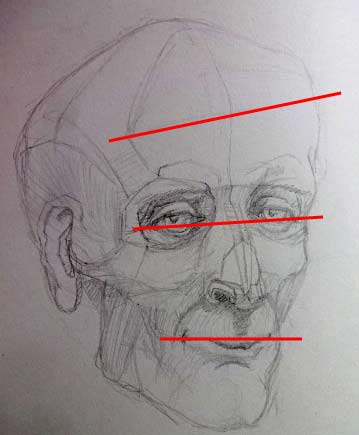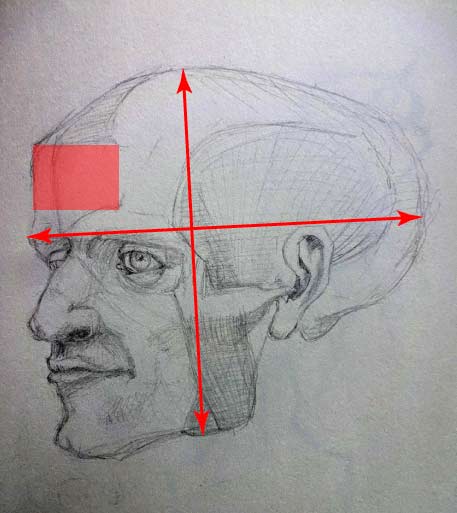Portrait studies critique
Sketches and questions from Danielle, Drawing Academy student
Hello,
It has been a while since I sent anything; life has been very busy and hectic. I have been drawing—not as much as I wish, but I have.
These are studies of skulls morphing into the flesh, trying to understand the underlying structure and outer elements.
The structural drawing remains a challenge for me. I do realize, though, that any problem usually stems from not getting the structure right from the beginning. I realize I lack patience in that step; I just want to get going.





I am also getting conscious of another big challenge; it is a psychological one. I am very shy about either sitting outside and drawing or drawing someone. I tend to just hide in a corner, and if people are around, I don’t do so well. This is something I must conquer, as I really wish to be able to do portraits.
I find the Drawing Academy lessons incredibly helpful. The instructions seem simple, but they stick in my mind, and as I go, I hear them and refine constantly. Each time I review the lessons, I find another thing to refine and work on.
Thank you for such a great course!
Danielle
Dear Danielle,
Thank you very much for your wonderful head studies. You are doing a great job; I really like your thorough approach to portrait drawing.
Your drawings are very good, but there are few things to check and keep in mind when drawing a human head:
1. Perspective
 When drawing a head, the three-quarter view, you need to keep an eye on perspective.
When drawing a head, the three-quarter view, you need to keep an eye on perspective.
To do so, you can mark horizontal lines of the forehead, the eye-line, the line of the cheekbones, the base of the nose, the mouth, and the bottom of the chin.
All those lines will be parallel to each other (having the same tilt) or slightly converge towards one vanishing point somewhere on the horizon.
In your drawing, those lines are noticeably diverging, resulting in reverse perspective.
2. Proportions
 To avoid constructive mistakes, an artist should draw what one knows rather than relying on intuition and visual memory.
To avoid constructive mistakes, an artist should draw what one knows rather than relying on intuition and visual memory.
We perceive a human face as the most important part of the head and therefore subconsciously draw it proportionately bigger than it is in real life.
Here’s one proportion that helps to keep the cranial and face parts in balance: the horizontal line of the head that divides it exactly in the middle from top to bottom goes through the eyes.
In your drawing this proportion is not in place and therefore the cranium’s volume is smaller than it should be.
 Another way to draw proportionate portraits is checking the head’s height-to-width ratio, which can be fine-tuned in your drawing so the head doesn’t look too wide.
Another way to draw proportionate portraits is checking the head’s height-to-width ratio, which can be fine-tuned in your drawing so the head doesn’t look too wide.
Constructive drawing should also apply to the smaller parts of the head; for example, the forehead in your drawing is too narrow. This would be easy to fix should you compare its edge to the location of the eyebrow’s end.
There are many other discrepancies in proportions that do not spoil the overall look of your drawings, and I will skip them in this critique.
Here’s a good way to improve your constructive drawing approach: work more on big masses and make sure they are “well built,” proportionate, and have correct perspective.
You are very good with smaller details like facial features, so with a strong foundation of the cranium and the facial structure, you will have no difficulties drawing eyes, nose, mouth, and ears. Think of these features as the décor of the house; if the foundation and walls are not built properly, no decoration will fix an unsound building.
Regarding your shyness when drawing in public, you are not alone.
Many artists find it difficult working when someone is watching. Look at it this way—many people don’t have your drawing skills and will admire your ability to draw portraits.
Also, there is no harm if someone more professional than you were to check out your drawing and maybe comment with some helpful advice. It is up to you whether to take it or not.
I hope this helps.
Best regards,
Vladimir
To learn human anatomy fast, visit the Anatomy Master Class »
To learn professional drawing techniques,
- Receive 15 new videos monthly (45 in total)
- Incredible discount – $4,164
- Bonuses - Fine Art eBooks and Videos
- Drawing Academy Diploma of Excellence after course completion in 3 months
- Personal coaching by Drawing Academy Tutors
- Lifetime membership. Free after the 3rd month
- Immediate access to all 45 video lessons
- Incredible discount – $4,198
- Bonuses - Fine Art eBooks and Videos
- Drawing Academy Diploma of Excellence after course completion in 3 months
- Personal coaching by Drawing Academy Tutors
- Lifetime membership. No more payments
Dear Vladimir,
You wrote “I hope this helps”—this is tremendous! To have this direct critique of something, and with the red lines pointing to the issues on the drawings, and your words telling me exactly what I need to do!
Yes, I need to get more disciplined with the constructive drawing part.
I know I am following the Drawing Academy course quite slowly, but my gains are huge thanks to your masterful understanding.
I am smiling ear to ear! I will keep working!
Thank you!
Danielle


This Post Has 0 Comments